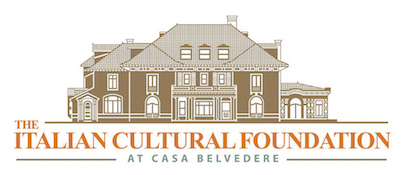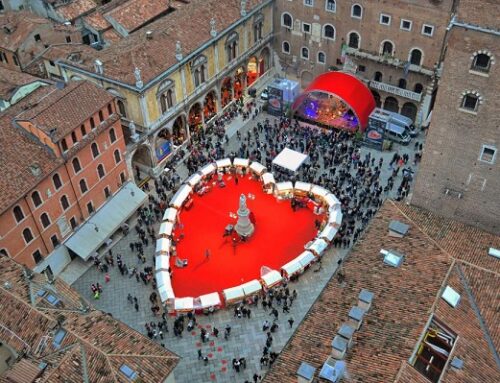Ever tried explaining your dream house to someone using nothing but blueprints and hand gestures? Good luck with that. It’s like trying to describe a rainbow to someone who’s never seen color. But here’s where the magic happens – house 3D renderings have completely flipped the script on how residential designs get approved, turning abstract concepts into crystal-clear visual stories that sell themselves.
The approval process used to be a nightmare of confusion, miscommunication, and expensive mistakes discovered too late. Not anymore. Today’s smart developers and architects have discovered a secret weapon that’s revolutionizing how projects move from concept to construction.
The Old School Approval Nightmare
Picture this scenario: you’re sitting in a stuffy conference room with planning commissioners squinting at 2D blueprints, trying to imagine how your three-story modern home will actually look next to the Victorian neighbors. Half the room sees a masterpiece, the other half sees an eyesore. Nobody’s actually seeing the same thing.
Traditional approval processes relied heavily on technical drawings that required professional training to interpret. Homeowners felt lost, planning officials made assumptions, and architects spent countless hours explaining basic concepts that should have been obvious. The result? Delayed approvals, costly revisions, and frustrated stakeholders across the board.
But that was then. This is now.
The Visual Revolution in Residential Approval
House 3D renderings have transformed residential design approval from a guessing game into a confident decision-making process. When you can walk through your future home before the foundation is poured, everything changes.
As architectural legend Louis Kahn once observed, “Architecture is the reaching out for the truth.” Modern 3D visualization makes that truth impossible to miss. No more squinting at floor plans wondering if the kitchen feels cramped. No more debates about whether the roof line works with the neighborhood character. Everything becomes obvious when rendered in photorealistic detail.
Here’s what’s driving this transformation:
Immediate Visual Understanding: Planning commissioners no longer need architectural training to evaluate projects. They see exactly what will be built, complete with materials, lighting, and environmental context.
Neighborhood Integration Assessment: Renderings show how new construction fits within existing streetscapes, addressing community concerns before they become roadblocks.
Stakeholder Alignment: Everyone – from homeowners to contractors to city officials – literally sees the same vision, eliminating misunderstandings that typically derail projects.
Streamlining the Municipal Approval Process
Municipal planning departments have discovered that 3D renderings dramatically reduce review time and improve decision quality. Clear, detailed visuals of proposed designs facilitate a smoother approval process, ensuring that construction can begin as scheduled.
Smart cities are adapting their approval processes to accommodate visual presentations. Instead of forcing officials to imagine how projects will look, view details presentations let them experience proposed developments firsthand.
The psychological impact is profound. When planning commissioners can virtually walk around a proposed house, examining it from every angle and seeing how sunlight plays across the facade at different times of day, their confidence in approval decisions skyrockets.
Key municipal benefits include:
- Faster review cycles due to immediate visual comprehension
- Reduced back-and-forth clarification requests
- More informed public hearings with engaged community participation
- Documentation that clearly supports approval decisions
Homeowner Engagement and Confidence
For homeowners, 3D renderings transform the approval process from anxious waiting to excited anticipation. When you can see your future home in stunning detail, you become an advocate rather than a nervous observer.
Modern homeowners expect visual clarity in major investment decisions. They’re used to seeing products from every angle before purchasing, and their homes – typically their largest investment – deserve the same treatment.
Residential rendering allows for extensive customization and personalization. Clients can explore different design options, materials, and color schemes with ease, ensuring the final design aligns with their vision while meeting municipal requirements.
The engagement factor is revolutionary. Instead of hoping officials understand your architect’s vision, you’re showing them exactly what you plan to build. This confidence translates into more successful approval outcomes and stronger community support.
Addressing Design Concerns Before They Become Problems
One of the most powerful aspects of 3D residential renderings is their ability to identify and resolve potential issues during the approval phase rather than during construction.
Visual presentations reveal design elements that might not work in practice – sight line problems, shadow impacts on neighboring properties, or aesthetic conflicts with local character. These discoveries during the approval phase save thousands of dollars and weeks of delays compared to discovering them during construction.
As Frank Lloyd Wright famously said, “A building is not just a place to be but a way to be.” 3D renderings ensure that “way to be” harmonizes with community expectations from day one.
Common design issues caught early include:
- Privacy concerns between neighboring properties
- Parking and traffic flow problems
- Landscaping that doesn’t match local requirements
- Building height or scale issues that conflict with zoning
- Material choices that clash with neighborhood character
Speed and Efficiency in Approval Timelines
Time is money in residential development, and 3D renderings dramatically accelerate approval timelines. Projects that previously required multiple review cycles now sail through initial presentations with clear visual communication.
The traditional approval process involved multiple rounds of clarifications, site visits, and revisions as officials tried to understand project implications. Photorealistic renderings eliminate most of these delays by answering questions before they’re asked.
Recent industry data shows that projects using comprehensive 3D presentations experience 40% faster approval times compared to traditional 2D submissions. This acceleration comes from reduced revision cycles and increased stakeholder confidence in initial decisions.
Technology Integration and Future Trends
The residential approval process continues evolving as rendering technology advances. Virtual reality presentations allow planning commissioners to literally walk through proposed developments, while augmented reality lets them visualize projects in real-world contexts during site visits.
Current 3D design creations optimize energy and construction resources, with algorithms and hardware optimized to achieve high image quality while reducing resource requirements. This sustainability focus aligns with municipal priorities for environmentally responsible development.
Artificial intelligence is beginning to predict potential approval challenges based on project characteristics and local regulations, helping developers address concerns proactively. Machine learning analyzes successful approval presentations to recommend optimal visualization approaches for different jurisdictions.
The Financial Impact of Faster Approvals
The economic benefits of streamlined approvals extend far beyond reduced waiting time. Faster approvals mean earlier construction starts, reduced carrying costs, and quicker project completion. For developers, this translates into significantly improved project economics.
Consider a typical residential project where approval delays cost approximately $1,000 per week in carrying costs, permit fees, and opportunity costs. A rendering investment of $2,000-5,000 that reduces approval time by six weeks generates immediate ROI of $6,000 or more.
For individual homeowners, faster approvals mean reduced uncertainty and stress. They can move forward with confidence, knowing their vision has been clearly communicated and approved as presented.
Building Community Support Through Visualization
One unexpected benefit of 3D renderings in the approval process is their ability to build community support for new developments. When neighbors can see exactly what’s being proposed – rather than imagining worst-case scenarios – opposition often transforms into acceptance or even enthusiasm.
Community presentations using high-quality renderings help residents understand how new construction will enhance rather than detract from neighborhood character. This visual clarity reduces NIMBY (“Not In My Backyard”) resistance and builds collaborative relationships between developers and communities.
Successful projects often involve community stakeholders in the visualization process, incorporating feedback that strengthens both design quality and local support. This collaborative approach turns potential adversaries into project advocates.
The Professional Advantage
Architects and developers who master 3D visualization gain significant competitive advantages in the approval process. Their projects move faster, encounter fewer obstacles, and generate stronger stakeholder support.
Professional rendering capabilities also enhance client relationships by demonstrating commitment to clear communication and project success. Clients appreciate seeing their investments visualized professionally rather than left to imagination.
The most successful residential professionals now consider 3D rendering an essential tool rather than an optional enhancement. It’s become as fundamental as structural engineering or zoning compliance.
Looking Forward – The Visual Future of Approvals
The transformation is just beginning. As rendering technology becomes more accessible and municipal processes adapt to visual presentations, we’re approaching a future where text-based approval processes seem as outdated as carbon paper.
Smart municipalities are investing in digital infrastructure that accommodates visual presentations, virtual hearings, and online community input. This evolution promises even faster, more transparent approval processes that serve everyone’s interests better.
The next frontier involves automated compliance checking, where AI systems review 3D models against zoning codes and building regulations, flagging potential issues before human review begins. This technology will further accelerate approvals while ensuring regulatory compliance.
House 3D renderings have evolved from nice-to-have marketing tools into essential components of successful residential development. They transform the approval process from a series of hurdles into a collaborative journey toward shared vision.
The bottom line? When everyone can see what you’re building, getting permission to build it becomes dramatically easier. In today’s competitive residential market, that visual clarity isn’t just helpful – it’s essential for success.





